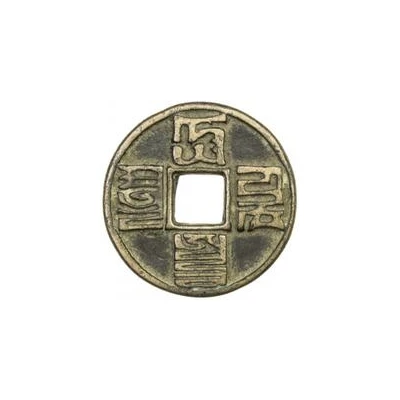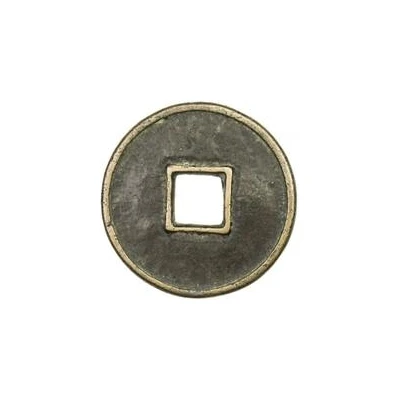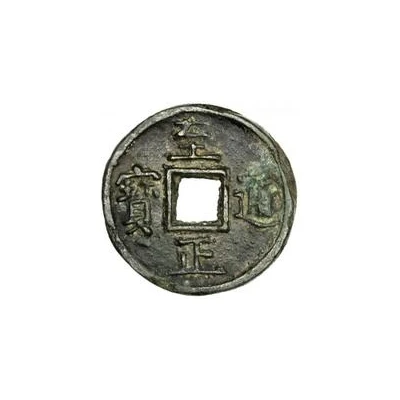10 Cash - Zhiyuan Tongbao; temple coin ND
| Bronze | - | 45 mm |
| Issuer | Empire of China |
|---|---|
| Emperor | Yuan dynasty › Ukhaghatu Khan "Huizong" (元惠宗) (1333-1368) |
| Type | Token |
| Years | 1335-1340 |
| Value | 10 Cash |
| Currency | Cash (621-1912) |
| Composition | Bronze |
| Diameter | 45 mm |
| Shape | Round with a square hole |
| Technique | Cast |
| Orientation | Medal alignment ↑↑ |
| Demonetized | Yes |
| Updated | 2024-10-03 |
| Numista | N#221866 |
|---|---|
| Rarity index | 100% |
Reverse
Blank (uniface).
Edge
Plain
Comment
During the Yuan dynasty, there was a preference for paper money and silver ingots, making actual coins scarce or rare. However, the Yuan dynasty emporers supported Buddhism, and allowed temples to cast their own statues and artifacts. These temple coins were originally cast as offerings to Buddha, but due to their metal content, they still had an intrinsic value. While they were not official issues, these were widely accepted and used as small change in the markets.With these not being official issues, there are different diameters and weights possible. The average weights seem to be around 1/2 Cash, but smaller and larger weights exist.
This example is very large, which Hartill says is 'presumably a temple coin'.
Interesting fact
One interesting fact about the Token 10 Cash - Zhiyuan (Tongbao; temple coin) ND (1335-1340) from Empire of China made of Bronze is that it was used as a form of currency in ancient China, specifically during the Yuan Dynasty. The coin was minted during the reign of Emperor Toghon Temur, also known as Emperor Zhiyuan, and was used to facilitate trade and commerce within the empire. The coin's design features a square hole in the center, which was used to string multiple coins together for ease of use. Additionally, the coin's bronze material was chosen for its durability and resistance to wear and tear, ensuring that it could withstand the rigors of daily use.



